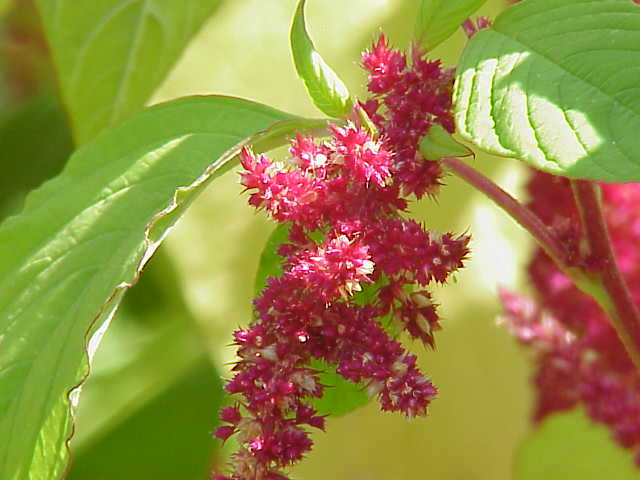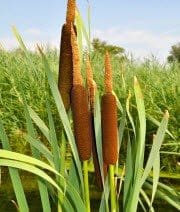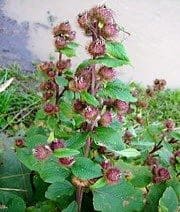Foraging For Food? Check Out These Five Tasty And Edible Plants

Have you ever watched shows where some people got stranded in the wild but managed to survive using their bare wits and living off the things that nature has to offer? Sometimes you might see how a poor guy ran into trouble after eating a plant that he assumes to be safe but is, in fact, poisonous. Maybe his survival instincts were not at the top of their game and he should have done more research into edible plants? Do you want to make sure that this doesn't happen to you? Read on to find out more about 5 plants that are safe to eat in the wild.
No matter where you might be in the world, identifying the plants that you can eat and the ones that you shouldn't go anywhere near is critical for your survival. You will never know when you might end up stranded in a wild forest, or washed up on the beach of a deserted island and have to fend for yourself in a survival situation. Are you ready for that?
It is important to know what the best edible plants are and knowing which ones are poisonous. Some plants smell nasty or look unpleasant but are quite nutritious and delicious to eat. Some plants taste disgusting and smell bad but can have all the right nutrients in them that can mean the difference between winning and losing.
Here are some of the useful plants that can help you make it through your survival situation and give your body the nutrients that it needs.
Cattail
 Also known as Bulrush, it is an easily recognizable plant because of its brown and cigar-shaped head that stands on top of a long stalk. Cattail is among the most common and most important wild foods, and it has various uses at different times of the year. You can read about them here at NativeTech. Inside the fresh shoot’s stalks, you will find tasty food that you can eat as it is, or if you prefer it can also be sautéed or stir-fried.
Also known as Bulrush, it is an easily recognizable plant because of its brown and cigar-shaped head that stands on top of a long stalk. Cattail is among the most common and most important wild foods, and it has various uses at different times of the year. You can read about them here at NativeTech. Inside the fresh shoot’s stalks, you will find tasty food that you can eat as it is, or if you prefer it can also be sautéed or stir-fried.
Amaranth
 Amaranth is a kind of weed that resembles a pigweed: a tall, broad-leafed and upright plant that grows all year round. It comes in various colors, shapes, and sizes. It is a type of leafy grain and vegetable that has been eaten in different parts of the world for many centuries. Its seeds, in particular, have a high content of minerals such as magnesium, calcium, iron and Lysine (an amino acid). Amaranth has a much higher nutritional content when compared to spinach, Swiss chard and beets. Also, the leaves of the plant contain three times more niacin and three times more calcium than found in spinach leaves.
Amaranth is a kind of weed that resembles a pigweed: a tall, broad-leafed and upright plant that grows all year round. It comes in various colors, shapes, and sizes. It is a type of leafy grain and vegetable that has been eaten in different parts of the world for many centuries. Its seeds, in particular, have a high content of minerals such as magnesium, calcium, iron and Lysine (an amino acid). Amaranth has a much higher nutritional content when compared to spinach, Swiss chard and beets. Also, the leaves of the plant contain three times more niacin and three times more calcium than found in spinach leaves.
Burdock
 Burdock is a common stout weed that has annoying burrs that stick to anything around them, such as clothing of hikers walking past, or animal fur. This biennial plant contains volatile oils, carbohydrates, tannins, fatty oils and plant sterols.
Burdock is a common stout weed that has annoying burrs that stick to anything around them, such as clothing of hikers walking past, or animal fur. This biennial plant contains volatile oils, carbohydrates, tannins, fatty oils and plant sterols.
According to the University of Maryland Medical Center it is used as a blood purifier, diuretic and also as a remedy for skin ailments such as acne and psoriasis.
Clovers
 If you find yourself stranded in the wild and feeling hungry, finding a clover field can be considered as a stroke of luck, primarily since this wild plant is 100% edible. The clover leaves are very delicious in juices and salads and are also valuable survival food since they have a high protein content. This is great news as clover is found in plentiful supply throughout the world. It might not be too easy to digest raw Clovers but you can fix this problem by just juicing and drinking them. The seed pods and dried flower heads can be ground up to create a nutritious flour that can be combined with other foods. You can also steam the dried flower heads in hot water to make a healthy and very tasty tea.
If you find yourself stranded in the wild and feeling hungry, finding a clover field can be considered as a stroke of luck, primarily since this wild plant is 100% edible. The clover leaves are very delicious in juices and salads and are also valuable survival food since they have a high protein content. This is great news as clover is found in plentiful supply throughout the world. It might not be too easy to digest raw Clovers but you can fix this problem by just juicing and drinking them. The seed pods and dried flower heads can be ground up to create a nutritious flour that can be combined with other foods. You can also steam the dried flower heads in hot water to make a healthy and very tasty tea.
Chickweed
 Chickweed is among those weeds that you can commonly see springing up everywhere. This hardy plant is wild and edible, and grows all year round and has a very delicate appearance of a thin hairy stem with oval pointed leaves. Chickweed is very healthy to eat and is full of minerals, vitamins, and other nutrients.
Chickweed is among those weeds that you can commonly see springing up everywhere. This hardy plant is wild and edible, and grows all year round and has a very delicate appearance of a thin hairy stem with oval pointed leaves. Chickweed is very healthy to eat and is full of minerals, vitamins, and other nutrients.
According to Drugs.com: "The young shoots are edible and have been used as salad greens."
Having additional knowledge of which plants are edible is great when you need to find alternatives when in the wild. Want to find out about natural items used for healing? Read this post now.
This video by Primitive Pathways shows some more edible wildflowers that you can find while out foraging.


